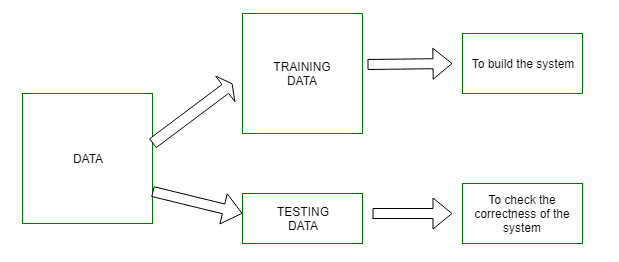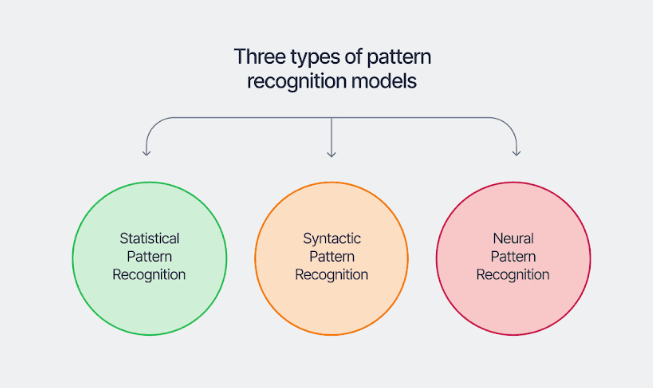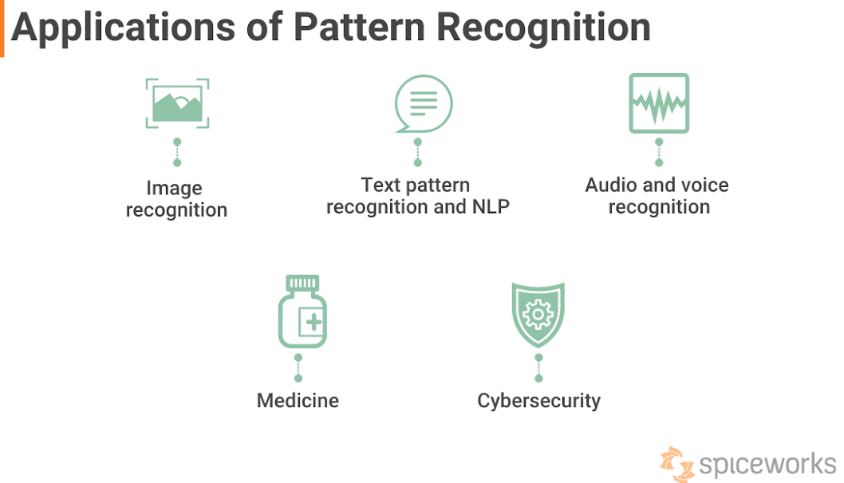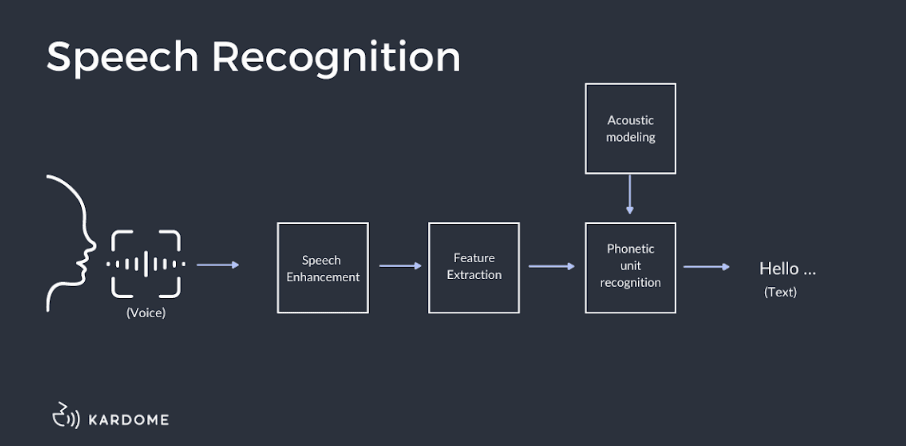What is Pattern Recognition?
Pattern recognition is the process of identifying patterns in data, involving the analysis and interpretation of information to discover regularities and similarities.
There are two main types of pattern recognition: supervised and unsupervised.
Supervised Pattern Recognition
Supervised pattern recognition trains a model on labeled data, allowing it to learn and recognize patterns based on the provided labels.
This type of pattern recognition is commonly used in classification tasks, such as determining if an email is spam or not.
Unsupervised Pattern Recognition
Unsupervised pattern recognition identifies patterns without any prior knowledge of the data. It is used in clustering tasks, where the goal is to group similar data points together, such as customer profiles.
Why is Pattern Recognition Important?

- Empowering Machine Learning: Pattern recognition is crucial for machine learning, as it enables algorithms to learn from patterns in data.
It's like giving machines the ability to observe and learn from their surroundings.
- Accelerating Data Analysis: Recognizing patterns in data streamlines the analysis process, making it faster and more efficient. It's like having a helpful companion who can quickly spot essential details in vast amounts of information.
- Informing Decision Making: By identifying trends, anomalies, and relationships in data, pattern recognition supports better decision-making.
It's like having a reliable advisor who provides valuable insights based on data patterns.
- Enhancing Automation: Pattern recognition allows machines to automate tasks that involve identifying patterns or trends, reducing human workload and increasing efficiency.
It's like having a dependable assistant who's always ready to help.
- Strengthening Security and Fraud Detection: Using pattern recognition techniques, systems can detect suspicious activities and fraud, improving security measures.
It's like having a watchful sentinel who's always on guard to protect against potential threats.
Who Uses Pattern Recognition?
- Technology Companies: Technology companies use pattern recognition to develop innovative products and services, such as voice assistants, image recognition systems, and recommendation engines.
- Financial Institutions: Banks and financial institutions leverage pattern recognition for fraud detection, credit scoring, and risk assessment, ensuring secure and efficient operations.
- Healthcare Providers: Healthcare providers utilize pattern recognition to improve diagnostics, analyze medical images, and predict patient outcomes, enhancing patient care and treatment effectiveness.
- Law Enforcement Agencies: Pattern recognition aids law enforcement in tasks like facial recognition, license plate identification, and crime pattern analysis, contributing to public safety and crime prevention.
- Manufacturing Industries: Manufacturers employ pattern recognition for quality control, defect detection, and predictive maintenance, optimizing production processes and reducing downtime.
How Does Pattern Recognition Work?

- Data Collection and Preprocessing: Pattern recognition starts with gathering and preprocessing data from various sources.
This step involves cleaning and transforming the data to ensure quality and prepare it for further analysis.
- Feature Extraction: Feature extraction is the process of identifying and selecting the most relevant attributes or characteristics of the data that can help distinguish different patterns. These features can be used as input for pattern recognition algorithms.
- Model Selection: Choosing the right model or algorithm is crucial for effective pattern recognition. There are several approaches, including statistical methods, machine learning techniques, and deep learning models, depending on the problem and data characteristics.
- Model Training and Learning: Once the appropriate model is selected, it is trained using the preprocessed data and extracted features.
During this step, the model learns to recognize patterns by adjusting its parameters to minimize errors and improve accuracy.
- Classification and Prediction: After the model has been trained, it can be used to classify or predict patterns in new, unseen data.
The model's performance is evaluated using various metrics, such as accuracy, precision, and recall, to ensure it is reliable and robust.
Types of Pattern Recognition

There are four main types of pattern recognition: statistical, syntactic, structural, and hybrid. Statistical pattern recognition involves analyzing data using statistical methods to identify patterns.
Syntactic pattern recognition involves using grammatical rules to identify patterns. Structural pattern recognition involves analyzing the structure of data to identify patterns.
Hybrid pattern recognition combines two or more of these methods to identify patterns.
Statistical Pattern Recognition
Statistical pattern recognition involves using statistical methods, such as regression analysis and clustering, to identify patterns in data.
Syntactic Pattern Recognition
Syntactic pattern recognition involves using grammatical rules to identify patterns in data. This can be useful in text analysis, where patterns may be based on sentence structure and syntax.
Structural Pattern Recognition
Structural pattern recognition involves analyzing the structure of data, such as the shape of objects in an image, to identify patterns.
Hybrid Pattern Recognition
Hybrid pattern recognition combines two or more of these methods to identify patterns. For example, a system may use both statistical and structural methods to identify patterns in medical images.
Applications of Pattern Recognition

Computer Vision
Pattern recognition plays a crucial role in computer vision tasks, such as object detection, facial recognition, and image segmentation, enabling machines to "see" and understand visual data.
Speech Recognition

By recognizing patterns in audio signals, pattern recognition allows for accurate speech recognition, enabling voice-controlled applications and natural language processing systems.
Fraud Detection
Pattern recognition helps identify unusual activities or behaviors in financial transactions, enabling businesses to detect and prevent fraudulent activities and maintain security.
Medical Diagnosis
In healthcare, pattern recognition assists in diagnosing diseases by analyzing patterns in medical images, such as X-rays, MRIs, or CT scans, and identifying abnormalities or anomalies.
Handwriting Recognition
Pattern recognition enables machines to identify and interpret handwritten text, allowing for applications like automatic data entry, document digitization, and signature verification.
Challenges in Pattern Recognition

- Handling Noisy Data: Dealing with noise, such as errors or inconsistencies in the data, is a challenge in pattern recognition, as it can affect the accuracy of classification.
- Variations in Patterns: Recognizing patterns with significant variations or subtle differences can be difficult, requiring robust algorithms and feature extraction techniques.
- Scalability: Developing pattern recognition systems that can handle large-scale data and adapt to increasing complexity is a challenging task.
- Real-time Processing: Implementing pattern recognition in real-time scenarios can be demanding due to computational constraints and the need for continuous model updates.
- Overfitting and Underfitting: Striking a balance between model complexity and generalization is crucial to avoid overfitting (too specific) or underfitting (too general) in pattern recognition.
TL;DR
Pattern recognition is a crucial aspect of modern technology, with applications in various fields. It enables machines to learn from data and make predictions based on that data.
While there are challenges in pattern recognition, new advancements and emerging trends offer exciting opportunities for the future. We hope this glossary has provided you with a better understanding of pattern recognition and its importance in modern technology.
Frequently Asked Questions (FAQs)
What is Pattern Recognition?
Pattern recognition is the process of identifying and classifying patterns in data, such as images, text, or sounds, using algorithms and machine learning techniques.
How does Pattern Recognition work?
Pattern recognition algorithms analyze data, extract features, and compare them to pre-existing patterns or models to identify similarities and classify the input.
What are the applications of Pattern Recognition?
Pattern recognition has applications in various fields, including computer vision, speech recognition, natural language processing, and medical diagnosis.
What are the challenges in Pattern Recognition?
Challenges in pattern recognition include handling noisy data, dealing with variations in patterns, and ensuring robustness and adaptability of algorithms.
What techniques are used in Pattern Recognition?
Common techniques in pattern recognition include neural networks, decision trees, support vector machines, and clustering algorithms.

